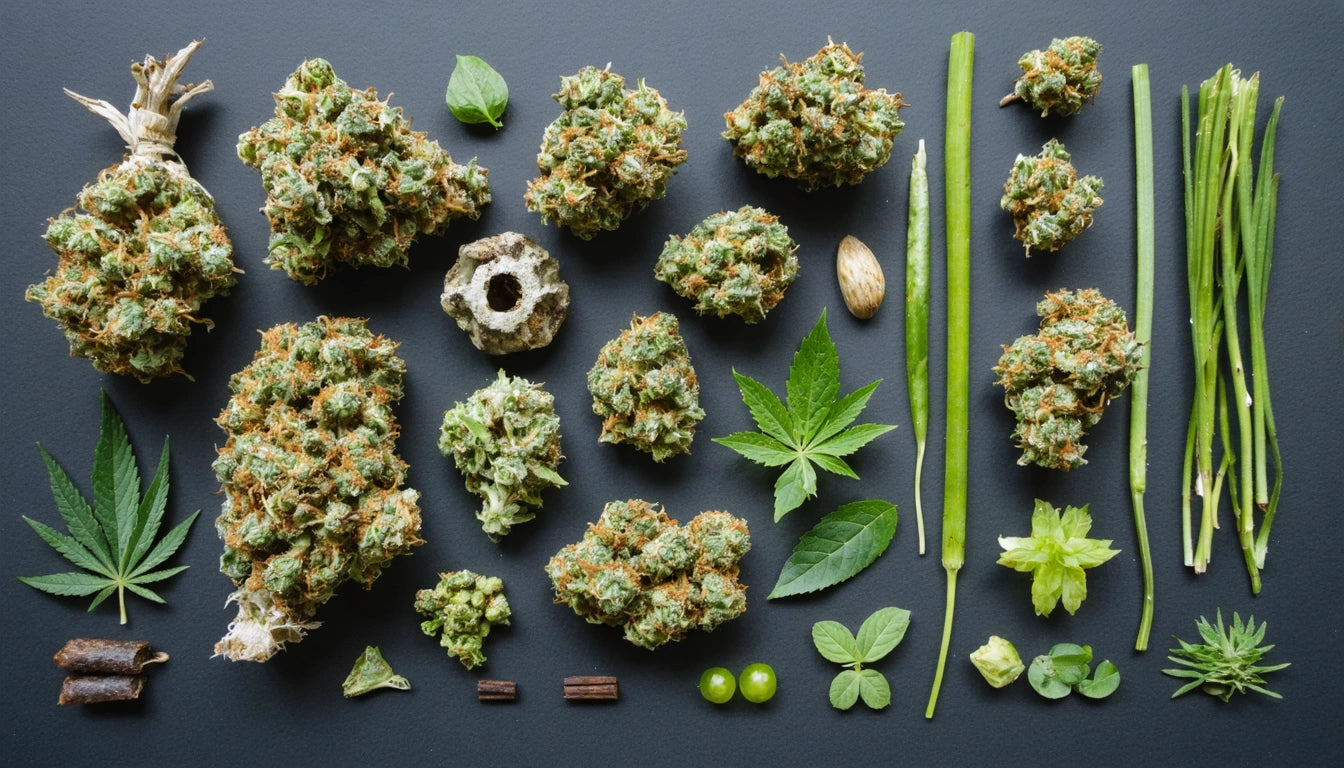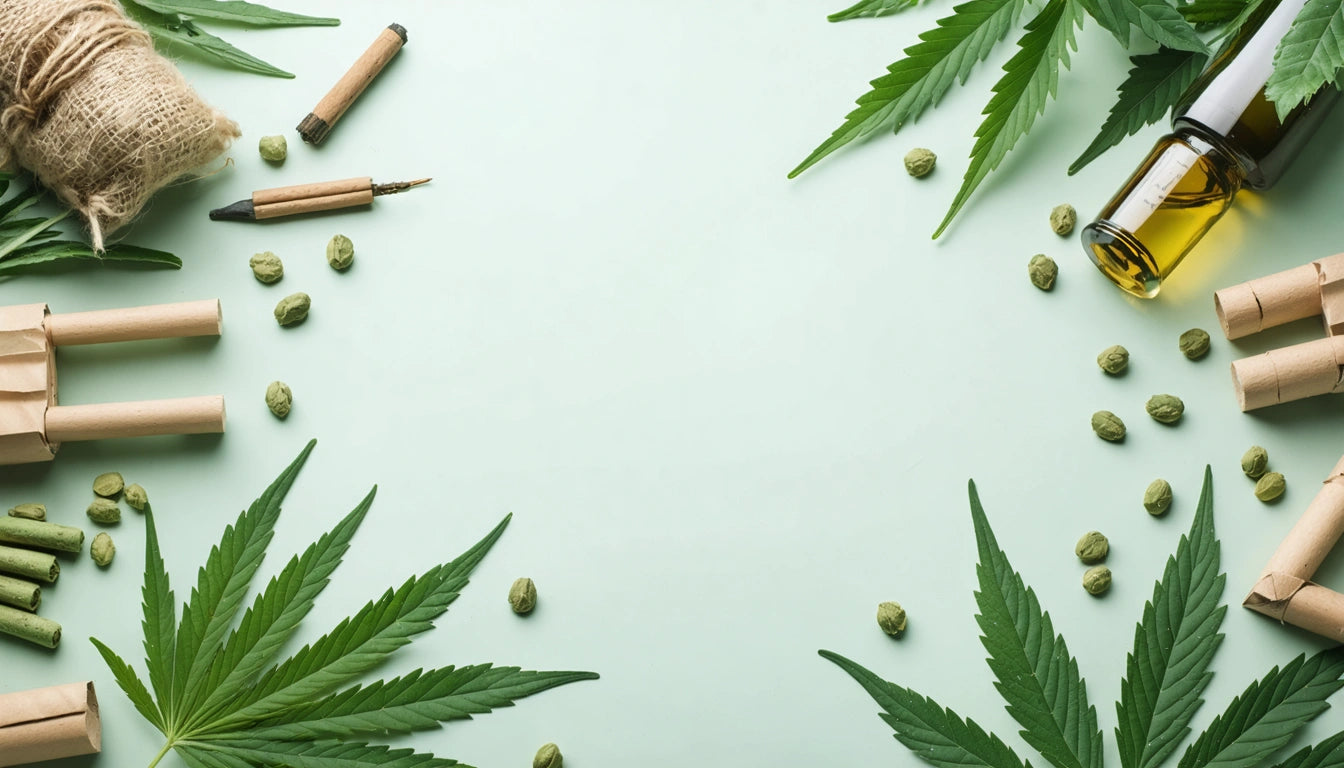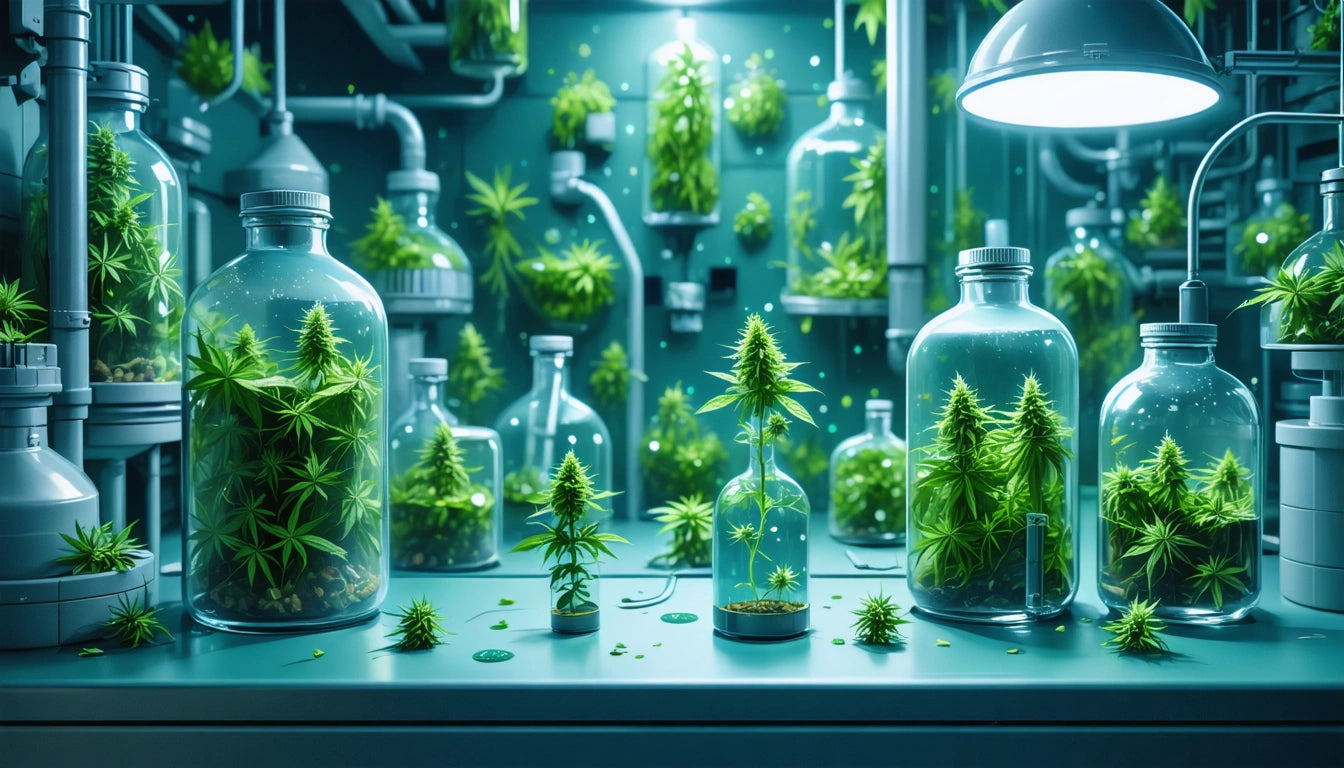Table of Contents
Effective Ways to Eliminate Mold from Cannabis Plants and Buds
Mold contamination represents one of the most serious threats to cannabis cultivation, affecting both plant health and consumer safety. Whether you're dealing with powdery mildew on living plants or discovering mold during the curing process, quick and effective remediation is essential. This guide explores proven methods to identify, eliminate, and prevent mold on cannabis plants and harvested buds.
Identifying Cannabis Mold: Types and Warning Signs
Before treatment, accurate identification is crucial. The most common types of cannabis mold include:
- Powdery mildew: Appears as white, powder-like patches on leaves
- Botrytis (bud rot): Shows as gray or brown fuzzy growth inside buds
- Sooty mold: Presents as black, soot-like coating on leaves
- Aspergillus: Often invisible to the naked eye but can cause yellowish spots
Early detection significantly improves your chances of saving affected plants. This visual guide to identifying mold on cannabis provides detailed images to help with accurate diagnosis.
Immediate Actions for Mold-Affected Cannabis
When you discover mold, immediate action is necessary:
For Live Plants:
- Isolate affected plants immediately to prevent spread
- Improve air circulation around all plants
- Reduce humidity levels to below 50%
- Remove severely affected leaves or branches
For Harvested Buds:
- Separate affected buds from clean ones
- Assess the extent of contamination
- Determine if remediation is possible or if disposal is necessary
Safety should always be your priority. As noted in our guide on moldy weed risks, consuming moldy cannabis can cause serious respiratory issues and other health problems.
Treating Mold on Live Cannabis Plants
When dealing with how to get rid of mold on weed plants, several effective treatment options exist:
Organic Treatment Methods:
- Neem oil solution (1-2 tablespoons per gallon of water)
- Diluted hydrogen peroxide spray (1:10 ratio with water)
- Potassium bicarbonate solution (1 tablespoon per gallon)
- Milk spray (1:10 ratio of milk to water)
For Sooty Mold Specifically:
Sooty mold often appears as a secondary infection following pest infestations. To effectively get rid of sooty mold:
- Treat the underlying pest problem, typically aphids or scale insects
- Wash affected leaves with mild soap solution
- Apply neem oil to prevent reinfestation
- Improve air circulation to dry leaf surfaces
For comprehensive pest management that helps prevent sooty mold, check out our guide on eliminating pests and aphids on cannabis plants.
Removing Mold from Harvested Buds
Learning how to remove mold from weed after harvest requires careful consideration:
Assessment and Triage:
- Examine buds under bright light, preferably with magnification
- Buds with visible mold inside should generally be discarded
- Surface mold may sometimes be remediated
Remediation Options:
- Careful trimming of affected areas (wear mask and gloves)
- Brief hydrogen peroxide bath (3% solution for 30 seconds)
- Controlled UV-C light exposure (requires specialized equipment)
For buds in the curing process, how to get rid of mold on curing buds often involves improving container conditions:
- Remove affected buds immediately
- Reduce humidity in jars to 55-62%
- Add humidity control packs
- Increase "burping" frequency
When packaging your final product, proper containers make all the difference. Many cultivators use custom pre-roll packaging solutions that maintain optimal humidity levels while preventing moisture buildup that could lead to mold development.
Prevention Strategies for Mold-Free Cannabis
Prevention is always more effective than treatment when it comes to cannabis mold:
Environmental Controls:
- Maintain humidity between 40-50% during flowering
- Ensure proper air circulation with oscillating fans
- Install adequate ventilation and air exchange systems
- Defoliate strategically to improve airflow
Cultural Practices:
- Avoid overwatering and water at the base of plants
- Space plants properly to allow airflow
- Keep growing areas clean and debris-free
- Regularly inspect plants for early signs of issues
For indoor growers, dehumidifiers and environmental controllers are worthwhile investments. Outdoor growers should consider planting mold-resistant strains and utilizing greenhouse structures when possible.
Powdery mildew, a common cannabis pathogen, requires specific prevention tactics. Our resource on preventing and treating powdery mildew provides detailed protocols.
Long-Term Protection for Cannabis Cultivators
Beyond immediate remediation, developing a comprehensive anti-mold strategy ensures long-term success:
- Implement regular preventative spraying schedules during vegetative growth
- Invest in environmental monitoring systems with alerts
- Develop standard operating procedures for mold identification and response
- Train all staff on proper plant handling and hygiene protocols
- Consider beneficial microorganisms that compete with pathogenic fungi
Commercial cultivators should establish quarantine protocols for new plant material and regular testing regimens to catch contamination early. Home growers can achieve similar protection through diligent monitoring and maintenance.
Remember that proper drying and curing techniques significantly reduce mold risk. Slow drying in controlled conditions (60-65% humidity) followed by proper curing in appropriate containers creates an environment where mold struggles to establish.
By combining vigilant monitoring, prompt intervention, and preventative measures, you can effectively eliminate mold from cannabis plants and maintain a clean, healthy harvest from growth through consumption.











Leave a comment
All comments are moderated before being published.
This site is protected by hCaptcha and the hCaptcha Privacy Policy and Terms of Service apply.